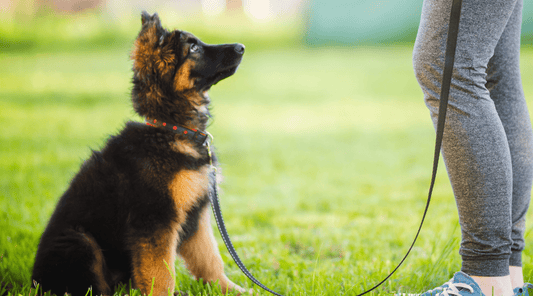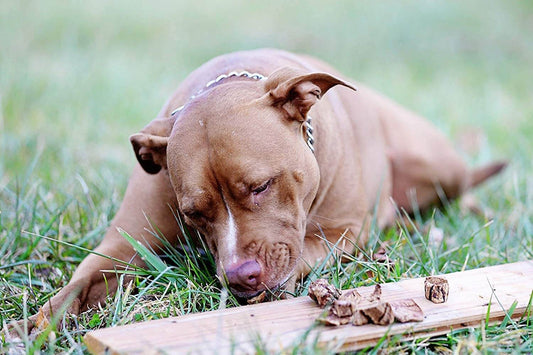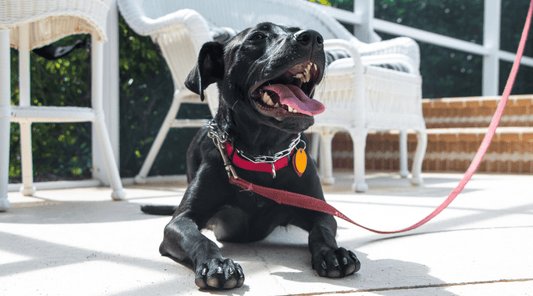
How to Socialize a Dog: Key Tips for Success
Dawn Miller Jan 20, 20255 Minute ReadActively socializing a dog has a big impact on how they experience the world, behave, and connect with humans, dogs, and other animals. Regardless of when you start socialization training for dogs—at 3 weeks or 7 years, certain strategies work.
Last Tuesday, I was at the dog park with my 3 dogs when I ran into Emma and her new pup, Bilbo Waggins. Bilbo was a curious 6-year-old beagle mix with floppy ears. His excitement to see my terrier Pixie was undeniable. But he didn't know how to act—sniffing one minute, then growling and running away.
Emma explained that he hadn't grown up around other dogs. His previous owner had kept him mostly indoors with many cats. Emma was on a mission to help him get out more.
Socializing a dog is more than just letting them play with other pups. It’s about introducing them to new dogs and the world in a safe, positive way. And yes, dog treats and dog bones can play a big role in making interactions successful.
Why Socializing a Dog Is Important
Socialization is essential for all aspects of life. It determines how they interact with:
- People
- Dogs, cats, and other pets
- New places
- Familiar spots
- Household items like furniture or shoes
- Moving vehicles like bikes/cars/strollers
- Unexplained noises
A well-socialized dog is confident, calm, and predictable, even in unfamiliar situations. They're a happier companion. And life together is more enjoyable for both of you.
When to Start Socializing a Dog
The earlier, the better. They don't say, "you can't teach a old dog new tricks" for no reason. Puppies may seem like an uncontrollable ball of pure energy. But puppy socialization should start early when possible to have a well-adjusted dog.
But don't give up on an older dog.
Actually, you can, and many of us do train them because we adopt middle-aged dogs like Pixie.
How to Socialize a Dog: A Step-by-Step Guide
1. Teach Basic Commands
Teaching basic commands like "sit" and "stay" will help you in later steps. They don't have to be perfect before you start socializing a dog. But these basics should be in the works. They will allow you to maintain better control over your dog when they want to jump up, chase, or even fight.
2. Start Small and Stay Upbeat
Begin in a controlled environment like your backyard or a quiet park. This minimizes overwhelming stimuli. Your dog can adjust at their own pace. Whether introducing them to a new dog, their comfy crate den, or the bathtub, compassion and patience will help you get them comfortable faster than chiding and frustration.
3. Use Positive Reinforcement
Reward calm and curious behavior with healthy dog treats. A single-ingredient treat, like beef lung bites, is perfect for this. It’s both irresistible and nutritious.
Every positive interaction deserves a little celebration with a treat, praise, and pets.
Each time you reward them, you're reinforcing that behavior. You're helping them learn what new words like "down" and "come" mean. According to the American Psychological Association, dogs can learn around 165 human words.
4. Introduce Gradually
Introduce your dog to one new element at a time—a friendly neighbor, a child riding their bike on the sidewalk, or a gentle dog. Keep interactions brief and positive, and watch for signs of stress or discomfort.
5. Set Up Playdates
Organize playdates with trusted dogs in a secure space. Choose dogs that are calm and well-socialized to model good behavior for your pup. If I'd known about Bilbo sooner, I would have recommended that he and Pixie have a one-on-one play date in our backyard rather than meeting for the first time in a noisy dog park.
6. Expose Them to Variety
Vary the environments and experiences—walks on busy streets, visits to pet-friendly stores, or trips to dog-friendly play areas. Use each opportunity to build your dog’s confidence.
7. Stay Patient...Even If it Takes Some Time
Every dog is different. Some might adapt quickly, while others need more time. Keep encouraging them. Keep rewarding the behaviors you want to see more of.
Socializing a Dog with Special Needs
When I say "special needs", that certainly could be a physical or mental limitation they were born with or acquired. But more often, dogs have special needs because they come from physically or emotionally unsafe homes. If you're a serial adopter from your local shelter like I am, you realize these dogs are often rescues who need extra support.
Some dogs are afraid of tall people, shoes, brooms, or loud noises. You'll want to address this gradually. You can show them that a broom is used for cleaning, not hitting. And that tall people aren't necessarily mean just because the tall person in their previous home was one they had to stay out of the way of.
You can start building positive associations but also trust that you wouldn't put them in an unsafe situation. Teaching them commands and consistently using positive reinforcement builds this trust.
That's why dog training is so necessary for dogs. It's how to socialize a dog and help them feel safe in their environment and wherever they are when they're with you or your significant other.
Common Mistakes in Socialization Training for Dogs
Be aware of these pitfalls:
- Moving too quickly can overwhelm your dog and set back progress. Be intentional and slow as you build trust.
- Forcing interactions. Let your dog approach new people or animals on their own terms.
- Ignoring stress signals. Watch for signs like yawning, licking lips, or turning away, which may indicate discomfort.
- Using negative reinforcement. Always use encouragement and high value treats.
The Role of Dog Training Treats for Socialization
Opt for high-value training treats. These are irresistible to dogs but also nutritious. Dogs love beef.
So, I choose beef organ meat dog treats. These beef lung training treats are single ingredient with no weird stuff. My dogs love them.
I also use beef marrow bones for mental stimulation. Chewing on things is instinct. So, having something that is okay to chew on and tastes good is priceless for a dog. Marrow bones can alleviate boredom, build trust, and calm anxious pups.
The World Is Yours to Explore with Socialization
Socialization makes spending quality time with my dogs in public so much easier. As you grow more confident in your dog's ability to follow commands and behave even in unpredictable situations, you can:
- Take your dog on errands to pet-friendly places like the pet store or our local dog-friendly cafe.
- Walk different routes to expose them to new sights and smells.
- Go off-leash in places where it's legal and safe to do so. Usually parks, trails, the lake—as long as your dog is trained to return when you call.
- Host backyard gatherings with friends or family without worry they'll jump on guests, grab those juicy hamburgers off the plate, or bite someone who plays a little rough. They'll sit and enjoy their meaty beef dog bone and leave people food to the guests.
- Stimulate their minds with puzzle toys and beef marrow dog bones.
You have so much to look forward to when you choose to socialize your dog. Are you ready to do more with your dog? You can visit new places together and know they'll behave. I encourage you to check out this Free 7-Day Dog Training Challenge. It has everything you need to socialize a dog effectively.





